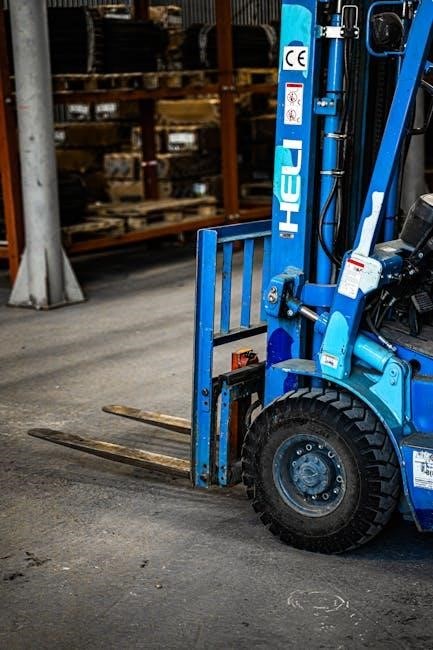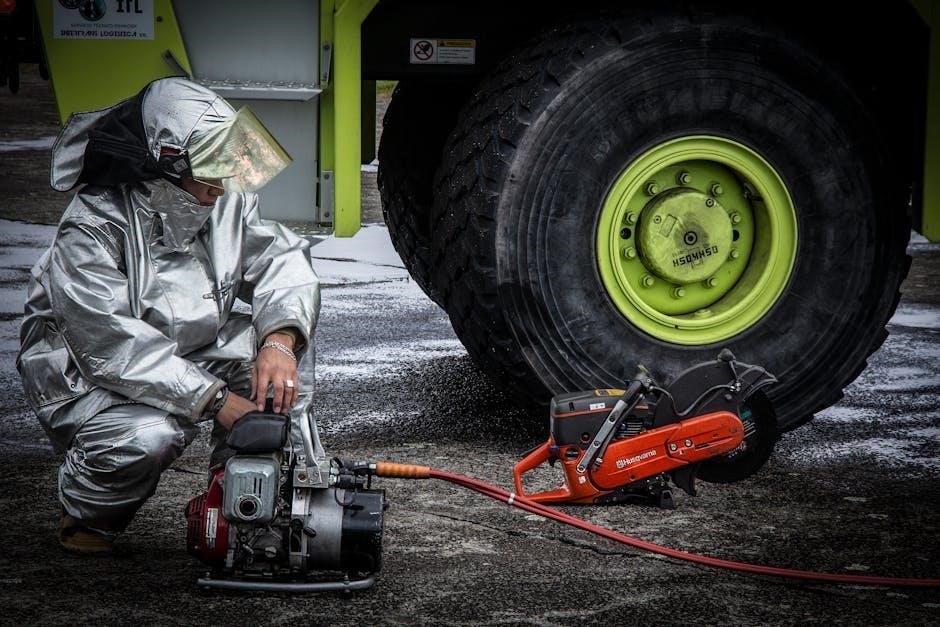TILE stands for Task, Individual, Load, and Environment, a framework used to assess and mitigate risks in manual handling tasks, ensuring workplace safety and efficiency․
Understanding the Basics of TILE
TILE is a framework used to assess manual handling risks by focusing on four key elements: Task, Individual, Load, and Environment․ Each component plays a crucial role in identifying potential hazards․ The Task involves understanding the nature of the activity, while the Individual considers the worker’s capabilities․ The Load assesses the object’s characteristics, and the Environment evaluates the surrounding conditions․ By systematically evaluating these factors, TILE helps reduce injury risks and enhances workplace safety․ This structured approach ensures a comprehensive analysis, making it a vital tool for employers and employees alike in maintaining a safe working environment․

What Does TILE Stand For?
TILE stands for Task, Individual, Load, and Environment, a framework assessing risks in manual handling to ensure safety and efficiency in workplace tasks․
Task, Individual, Load, and Environment Explained
The TILE framework is a structured approach to manual handling risk assessments․ It evaluates four key components: Task, Individual, Load, and Environment․ Each element is assessed to identify potential hazards and ensure safe practices․ The Task involves analyzing the nature of the activity, including how the load is moved․ The Individual considers the worker’s physical capabilities and training․ The Load examines the object’s weight, size, and stability․ Finally, the Environment looks at the workspace, including obstacles and conditions that may affect safety․ Together, these factors help minimize risks and prevent injuries in manual handling tasks․

The Importance of Manual Handling Risk Assessments
Manual handling risk assessments are crucial to prevent injuries, reduce costs, and ensure legal compliance, promoting a safer work environment by identifying and mitigating hazards․
Statistics on Workplace Injuries Related to Manual Handling
Manual handling injuries remain a significant workplace issue, with a third of all UK workplace accidents attributed to manual handling․ According to Unison, approximately 300,000 workers annually suffer from back pain due to manual handling tasks․ Shockingly, nearly 5 million working days are lost each year as a result of non-fatal manual handling injuries․ These statistics highlight the profound impact of poor manual handling practices on employee health and workplace productivity․ Implementing effective risk assessments, such as the TILE framework, is crucial to reducing these incidents and fostering a safer working environment․

Task Assessment in Manual Handling
Task Assessment evaluates the nature of the manual handling activity, considering how the task is performed and potential risks involved in the process․
Evaluating the Nature of the Task
Evaluating the nature of the task involves assessing how the manual handling activity is performed, including the actions, postures, and movements required․ This step identifies whether the task is repetitive, involves awkward postures, or requires excessive force․ It also considers the distance the load needs to be carried, the frequency of the task, and the duration for which it is performed․ Understanding these factors helps in identifying potential risks and determining whether the task can be modified or simplified to reduce strain on the worker․
Individual Assessment in Manual Handling
Assessing the individual involves evaluating their physical capabilities, strength, and personal factors that may influence their ability to perform manual handling tasks safely and effectively․
Considering the Abilities andCapabilities of the Worker
Considering the Abilities and Capabilities of the Worker
Evaluating the individual’s abilities and capabilities is crucial in manual handling․ This includes assessing physical strength, stamina, and overall fitness to perform tasks safely․ Personal factors such as body size, flexibility, and health conditions like back pain or injuries must also be considered․ Additionally, previous experience and training in manual handling techniques play a significant role in determining an individual’s suitability for specific tasks․ Understanding these factors helps in assigning appropriate roles and reducing the risk of injury or strain during manual handling operations, ensuring both worker safety and operational efficiency․
Load Assessment in Manual Handling
Load assessment examines the object’s weight, size, shape, and stability to determine handling risks․ This evaluation ensures safe manual handling practices and reduces injury potential effectively․
Characteristics of the Object or Load
The load’s weight, size, shape, and stability are critical factors in manual handling assessments․ A heavy or awkwardly shaped object increases handling difficulty, while unstable loads pose additional risks․ Surface texture, balance, and whether the load is evenly distributed also impact safety․ Additionally, the load’s temperature and any sharp edges or protrusions must be considered․ Assessing these characteristics helps determine the appropriate handling techniques and equipment needed to minimize injury risks and ensure safe manual handling practices․ Understanding the load’s properties is essential for effective risk mitigation in the workplace․

Environment Assessment in Manual Handling
The environment includes factors like workspace layout, flooring, lighting, and temperature․ These elements can significantly impact manual handling safety, requiring careful evaluation to ensure a hazard-free workspace․
Identifying Environmental Factors That Impact Safety
Environmental factors play a crucial role in manual handling safety․ Key considerations include workspace layout, flooring conditions, lighting levels, and temperature․ Uneven or slippery floors can increase the risk of accidents, while poor lighting may obscure obstacles or hazards․ Additionally, extreme temperatures can affect worker comfort and grip, potentially leading to unsafe handling practices․ Evaluating these elements ensures a safer working environment, reducing the likelihood of manual handling incidents․ Employers should regularly assess and adapt the workplace environment to mitigate these risks effectively․

Implementing TILE in the Workplace
Implementing TILE involves a structured approach to reduce manual handling risks by assessing tasks, individual capabilities, load characteristics, and environmental factors, ensuring safer and more efficient operations․
A Structured Approach to Reducing Manual Handling Risks
Implementing TILE provides a systematic method to evaluate and control risks․ By analyzing tasks, individual capabilities, load characteristics, and environmental factors, employers can identify potential hazards early․ This structured approach ensures that manual handling operations are planned and executed safely, reducing the likelihood of injuries and improving overall workplace efficiency․ Regular assessments and adjustments based on TILE principles help maintain a safer environment for employees, fostering a culture of proactive risk management and compliance with health and safety standards․

Best Practices for Manual Handling
Adopt TILE principles to enhance safety and efficiency․ Assess tasks, individual capabilities, load characteristics, and environmental factors․ Provide training, ensure proper lifting techniques, and use appropriate equipment to minimize risks․
Enhancing Safety and Efficiency in the Workplace
Implementing TILE principles significantly enhances workplace safety and efficiency․ By evaluating tasks, individual capabilities, load characteristics, and environmental factors, employers can reduce injury risks and optimize workflows․ Proper training in manual handling techniques, coupled with the use of appropriate equipment, further minimizes hazards․ Encouraging a culture of safety and continuous improvement ensures that workers perform tasks effectively while maintaining their well-being․ Regular assessments and adjustments to procedures help sustain a safe and efficient working environment, benefiting both employees and organizations․
TILE stands for Task, Individual, Load, and Environment, a framework that reduces manual handling injuries and enhances workplace efficiency by systematically assessing risks and improving safety practices․
Summarizing the Key Elements of TILE in Manual Handling
TILE stands for Task, Individual, Load, and Environment, a structured framework for assessing manual handling risks․ It evaluates the nature of the task, the worker’s abilities, the load’s characteristics, and environmental factors to ensure safe and efficient practices․ By systematically addressing these four components, TILE helps reduce injuries, enhance productivity, and create a safer workplace․ This approach is widely recognized as a critical tool for minimizing manual handling hazards and promoting overall occupational health and safety․
